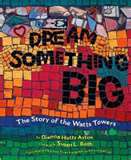 Summertime for kids means no alarm clocks, no spelling tests, no book reports. Summertime shouldn’t mean “no reading” – we just have to find ways to make reading part of the fun. Graphic novels like Binky the Space Cat by Ashley Spires are perfect for summer reading. Some kids (and parents) gasp when I say that graphic novels and comic books “count” as reading. Of course they do! Open up Binky the Space Cat and you’ll find rich vocabulary, an enticing main character, an action-riddled plot, all the components of a good book. But with comics and graphic novels, you also get art that draws in readers, especially reluctant ones. Spires’ illustrations tell as much of the story as her words do, so reading the pictures is as much of a comprehension exercise as is reading the text.
Summertime for kids means no alarm clocks, no spelling tests, no book reports. Summertime shouldn’t mean “no reading” – we just have to find ways to make reading part of the fun. Graphic novels like Binky the Space Cat by Ashley Spires are perfect for summer reading. Some kids (and parents) gasp when I say that graphic novels and comic books “count” as reading. Of course they do! Open up Binky the Space Cat and you’ll find rich vocabulary, an enticing main character, an action-riddled plot, all the components of a good book. But with comics and graphic novels, you also get art that draws in readers, especially reluctant ones. Spires’ illustrations tell as much of the story as her words do, so reading the pictures is as much of a comprehension exercise as is reading the text.
Before you set them free for summer vacation, entice your students by reading aloud the first 17 pages of Binky the Space Cat. This is where we learn that Binky is (or thinks he is) a super-top-secret Space Cat, with a mission “to one day blast off into outer space…” even though he hasn’t ever actually been outside. Inside his Space Station (house), he takes good care of his humans by protecting them from ALIENS!! (flies). There’s an obvious, hilarious disconnect between the words and the pictures, and your students will realize that what Binky thinks is not exactly what’s really going on. Talk with your students about Binky’s misconceptions. What does Binky think about outer space? What might happen if Binky actually went to “outer space”? What do you think Binky would use to build a rocket ship? Tell students that this is something Binky does later in the book, then prepare yourself for lots of hands reaching to read for themselves what happens next.
The publisher of the Binky series put together these free printable Binky activity sheets from Kids Can Press. One sheet encourages students to create a secret identity for their pet and to write about it using captions, word balloons, and sound effects. Another sheet in the Kids Can Press packet shows step-by-step how to draw Binky. Print off these sheets for your students, or if that feels too much like schoolwork, give students blank paper, rulers and art supplies to create their own comic books or cartoon strips. Comics and graphic novels like Binky the Space Cat can make reading and writing fun all summer long.





